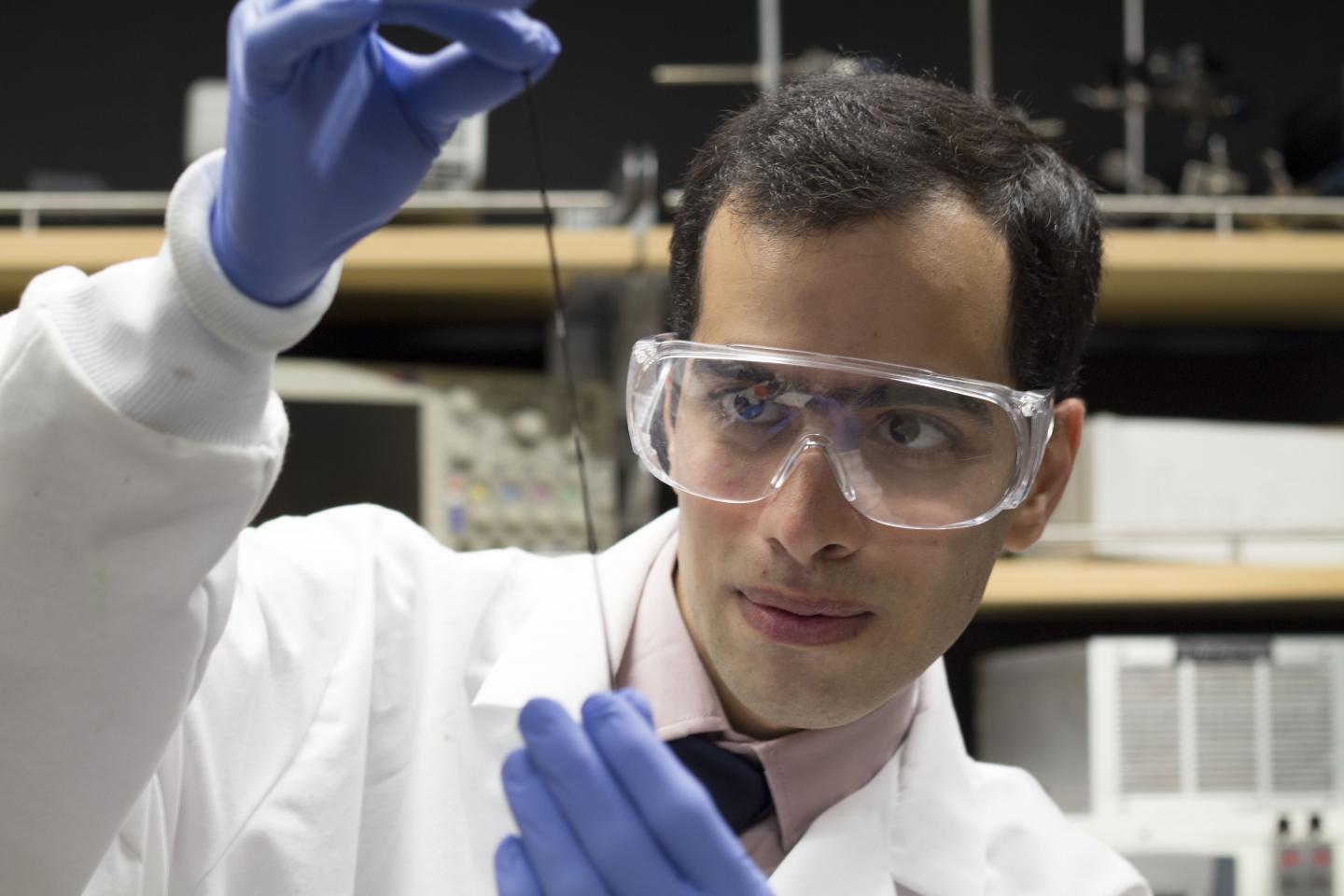
Smart clothing that can accurately monitor human movement is a step closer to becoming a reality thanks to new research by engineers at UBC Okanagan’s School of Engineering.
Researchers at UBC Okanagan developed a low-cost, sensitive and stretchable microscopic yarn sensor that can be woven into textiles and composite materials. The sensor is wrapped into a stretchable silicone rubber (SR) sheath to protect the conductive layer against harsh conditions.
According to Engineering Professor Mina Hoorfar, the embedded microscopic sensor can recognize local motion through the stretching of the woven yarns that are treated with graphene nanoplatelets that can read the body’s activity.
“Microscopic sensors are changing the way we monitor machines and humans,” says Hoorfar, lead researcher at the Advanced Thermo-Fluidic Lab at UBC’s Okanagan campus. “Combining the shrinking of technology along with improved accuracy, the future is very bright in this area.”
The sensors have shown promise in a wide range of applications, including heart rate monitoring or temperature control.
“Advanced textile composite materials make the most of combining the strengths of different reinforcement materials and patterns with different resin options,” said UBC Professor Abbas Milani. “Integrating sensor technologies like piezo-resistive sensors made of flexible materials compatible with the host textile reinforcement is becoming a real game-changer in the emerging era of smart manufacturing and current automated industry trends.”
The research, published in the journal Small, was conducted at the Composites Research Network and the Advanced Thermo-Fluidic Lab. The study recewived funding from the Natural Sciences and Engineering Research Council.
Citation
“Graphene‐Coated Spandex Sensors Embedded into Silicone Sheath for Composites Health Monitoring and Wearable Applications”
Hossein Montazerian Armin Rashidi Arash Dalili Homayoun Najjaran Abbas S. Milani Mina Hoorfar
First published: 28 March 2019 https://doi.org/10.1002/smll.201804991
